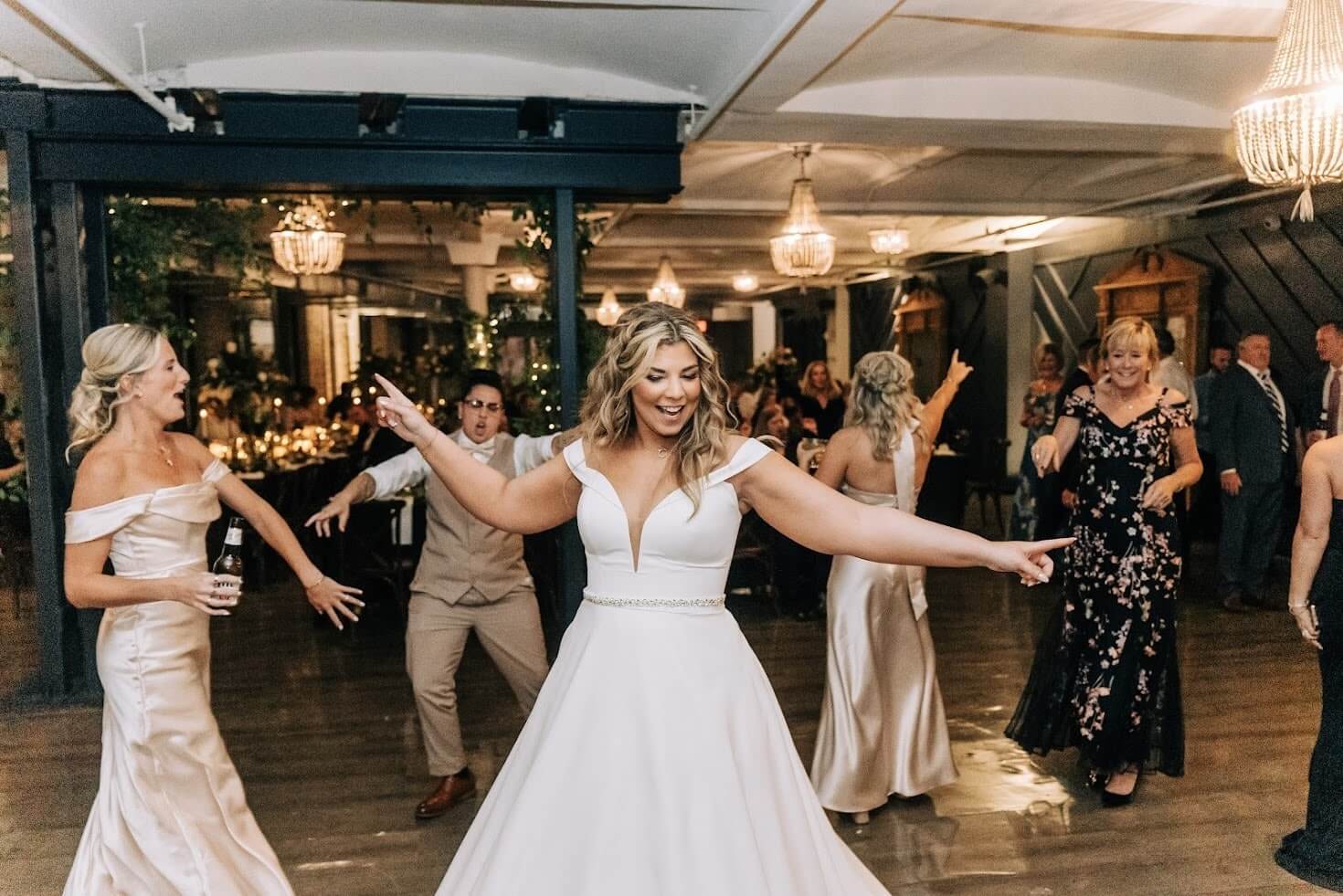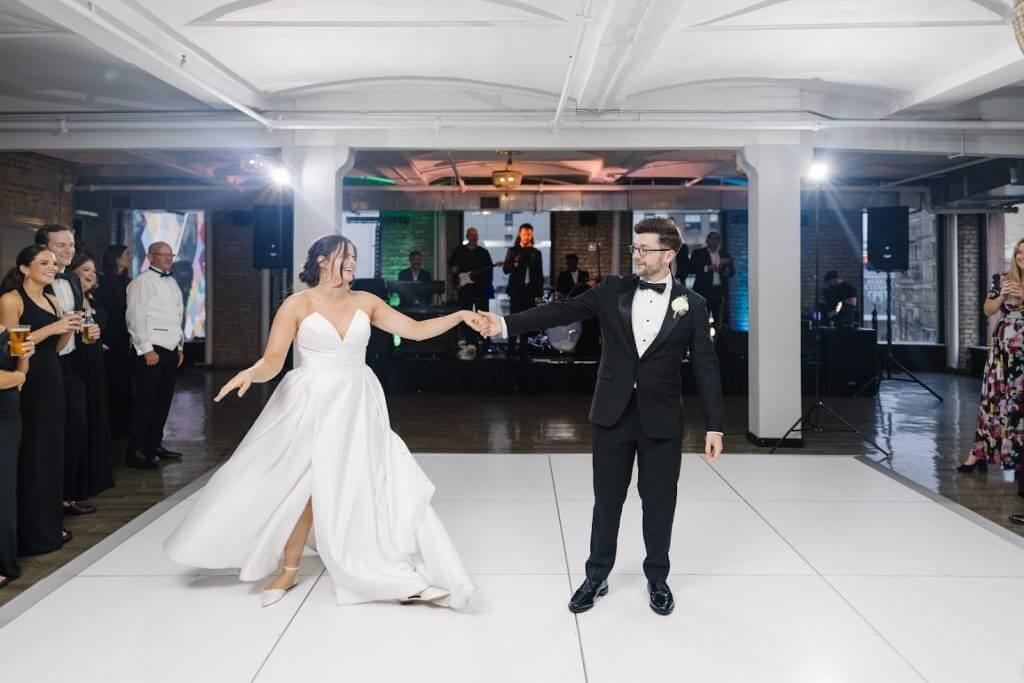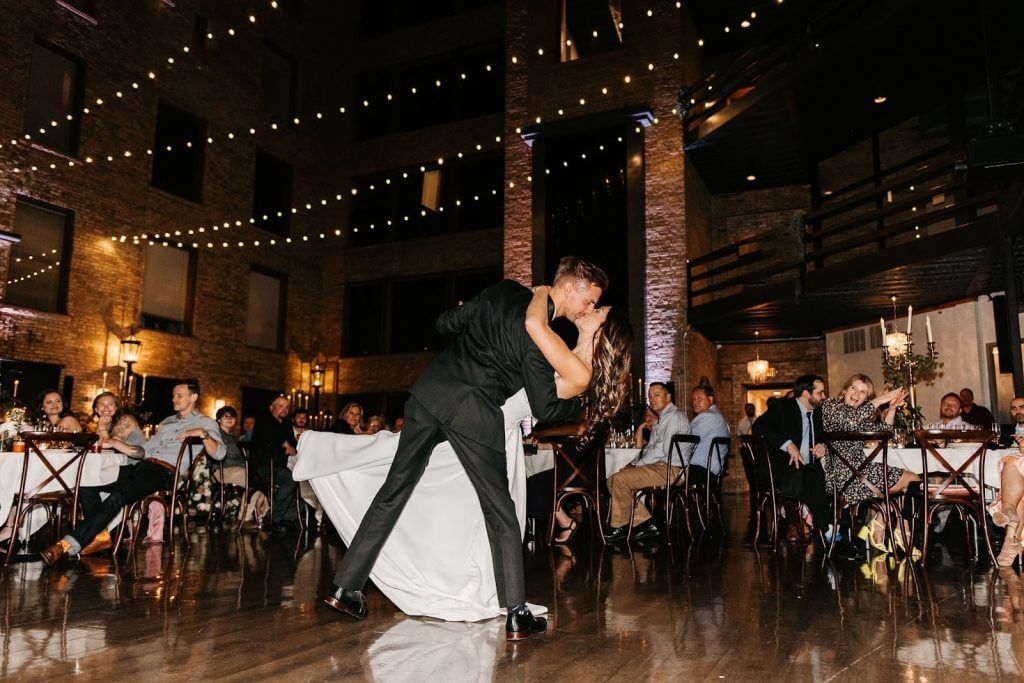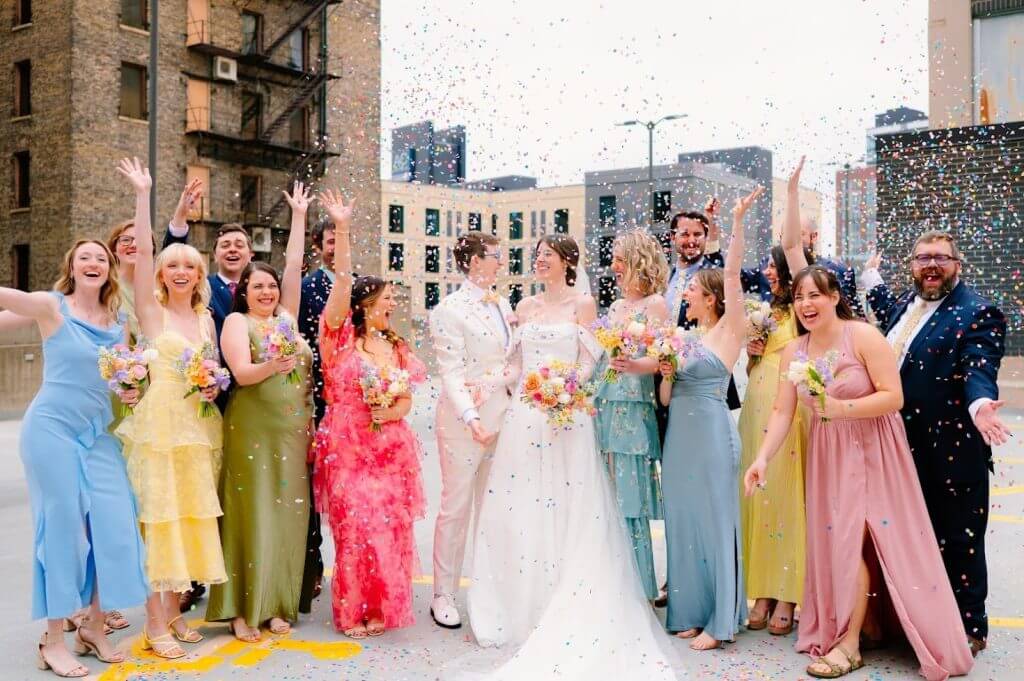
Music is an integral part of a wedding ceremony. The processional, recessional, first dance, parent-child dances, and songs chosen during the ceremony itself. Music creates memories that stick with a couple and their guests for the rest of their lives.
Choosing acoustic wedding songs allows a couple to put important lyrics in the forefront of everyone’s mind. “Here Comes the Bride” is iconic, but you aren’t going to associate it with a single couple or a single moment of celebration and love every time you hear it because you’ve probably heard it a thousand times at a thousand weddings.
Contrast that with a specific song or specific lyrics that bring a tenderness and unique flavor to a ceremony and reception — every time that song comes up on the radio or on your music streamer, you’ll get that flash of nostalgic joy from your big day.
So how do you choose acoustic songs that will stand out from the crowd while still serving as intimate wedding music? Every wedding is made up of different scenes, like a play. The key is to choose the right sound to match the scene.
Read More: How To Choose Music for your Wedding Reception
Start with the Feeling, Not the Tracklist
Lots of people have favorite songs that they dream of using at their weddings. At one point, it felt like Pachabel’s Canon in D Major scored every processional in the country because it got into an entire generation’s head in their formative years.
The problem with choosing a song and not letting yourself remain open to change is that your song may not fit the actual feel of your wedding. Having incongruous music will have your guests tilting their heads and saying “what an interesting choice” in the most condescending tone ever.
In order to choose your wedding acoustic setlist, focus on the feelings you want to highlight at each point in your ceremony. Some people like to focus on three specific core moods to guide their music selection. For example, you may want to reinforce feelings of tenderness, warmth, and lightness or lift.
When you have decided on those core moods, then you can look at whether you want live music, recorded tracks from a DJ, or a mix of both. Having some cool, live unplugged ceremony music could really stand out during the ceremony, but you may want to shift to recorded music during dinner service, just because it’s easier to control the volume and limit distracting your guests’ conversations.

Five Pillars of Great Acoustic Wedding Songs
Once you’ve made the choice to fill your wedding day with acoustic music and you’ve outlined the core feelings that you want to foster with your music selections, you can begin looking to fill out your playlist.
Whether you want to use a guitar, piano, or some combination of strings such as a trio, quartet, or harpist, there are five things to look for that will help you choose your acoustic ceremony songs. They are:
- Recognizable melody at a low volume: Let your guests identify the music, but make sure it won’t overpower the other elements of your big day.
- Lyric Clarity: If you’re picking a song because the words mean something to you, be sure those words can be understood.
- Short intros: You don’t want to keep people waiting for a song to get going — pick stuff that avoids long preambles before the song hits its stride.
- “Lift” for exits: An underrated function of music is helping to keep the energy up as a ceremony and reception transition from one big scene to another. Music with “lift” helps you maintain your flow and pacing.
- Style that fits the vibe: This is especially important if you have a live musician covering songs. It’s important that the way they perform fits with the atmosphere that you want to establish.
Create Ceremony Flow that Feels Intentional
In order to make your ceremony flow well, you need to know what each song is meant to do and how you and your bridal party need to interact with it. That means being aware of tempo, song length, and the physical space you are using as your venue.
Music during your ceremony can be separated into prelude, processional, and recessional. This does not include any songs you want within your ceremony. This is about the songs that have specific purposes within a ceremony.
Prelude
Your prelude music should be between 20 and 30 minutes of music chosen to complete the sensory picture of your ceremony. This is music that your guests can listen to as they file into your wedding venue and find their seats. It should be unobtrusive but follow along with your intended feel. Say you want more soulful music, this is where a selection of R&B acoustic wedding songs would fit perfectly.
Processional
The processional song does a lot of heavy lifting. It signifies the start of the ceremony while providing a soundtrack to the bridal party and, eventually the bride’s entrances. You want to pick something that will demonstrate a shift from your prelude that the bridal party can enter to at a pace that is neither too fast nor too slow. If you want the bride to have her own song or if you want her to enter to the same music as everyone else, you should take into account the logistics of your venue.
How long is the aisle? How long will it take people to get in place? Should the song wrap up as the bride makes it to the groom? Do you want the song to fade out? Having live musicians can help here because they can adapt to your song length and tempo needs. A recorded song can’t do that.
Recessional
Whether you want country acoustic wedding songs or more pop focused acoustic cover wedding songs or anything else, the song you choose for your recessional should provide a sense of triumphant lift and celebration. The song needs to be long enough to cover the entire bridal party’s exit, but setting a specific pace is not as important here as it is for a processional.

Scene-by-Scene Music Selection Tips
Here are a few tips to think about when you go about picking out your music. Keep in mind that it is ok to work with someone to edit songs so that they better fit what you need in terms of song length and avoiding long intros.
- Prelude: Keep to light vocals and instrumentals that stay close to similar keys and tempos.
- Processional: If using more than one song for the party vs the bride, be sure that the cut is clear, but not abrupt.
- Recessional: Keep it bright and consider a slightly faster tempo.
- Cocktail hour: This is a nice spot for some chill acoustic guitar cover songs. Avoid repeating songs from the prelude or ceremony.
- First Dance: Acoustic first dance songs should be meaningful to the couple, but still be something that can be augmented with some light choreography.
- Parent dances: Whether you are planning an acoustic father daughter dance or an acoustic mother son dance, be sure to keep the cutting of the song tight so that your guests can embrace the beauty of the moment, but get out on the dance floor themselves sooner rather than later.
- Last Dance: After a long day and night of celebration, sending everyone out on a high is key. Go for something the whole crowd can sing along to or choose a special, couple-centric song to keep everyone’s attention on the happy couple one last time.
Read More: Parent-Child Wedding Dance Songs: Choosing the Right Song for the Moment
Pay Attention to the Technical Requirements
Whether you decide to go with an entirely prerecorded playlist or hire live performers or do a mix of the two, you need to be aware of the technical requirements for your preferred music choice.
- What microphones will you need for a live singer?
- Do you need to mic up a guitar?
- Does the venue have a piano, or will your musician need to bring a keyboard?
- What is the sound system like for recorded music?
- Is there a specific file format you need to bring to use the venue’s speakers?
Most people don’t know the answers to this kind of thing off the tops of their heads. Working with experienced planners like those that facilitate weddings at The Lumber Exchange can be a godsend. They can help make sure that you get all the information you need to get the music you want on your special day.
Make the Music About You
In the end, your music choices should reflect who you are and how you want your wedding to feel. Do you want wall-to-wall soft acoustic love songs? You can have them. Do you want a piano cover of the Jurassic Park theme as your recessional? You can do that, too.
Acoustic wedding songs create a lovely, intimate feeling for a ceremony and reception that puts important lyrics front and center in the minds of everyone you’ve included in your day. They help guests feel closer to the happy couple while reinforcing the couple’s feelings for each other.
Make your day unique to you with the help of the team at The Lumber Exchange Event Center. Be sure that your perfect playlist is presented perfectly for a wedding no one will ever forget.
Read More: How to Create the Perfect Live Music Experience for Your Big Day

FAQs
How many acoustic songs are needed for a wedding ceremony?
Typically, between six and eight. Have some close out your prelude, one or two for an acoustic bridal entrance as part of the processional, an interval during the ceremony, and a recessional.
Is it okay to reuse a ceremony song during cocktail hour?
There’s no hard and fast rule against it, but it’s best to avoid it. It can feel tacky.
Live performer or playlist for ceremony music?
Live music allows you to tailor your music and timing to your needs better than recorded music unless you have access to someone that can give you strong, professional edits. But really, it’s up to you.
What BPM (Beats per Minute) is best for acoustic recessional songs?
Typically, 95 – 110 BPM is the sweet spot.
How long should the first dance and parent dance song-edits be?
Keep them around a minute and a half to two minutes. That keeps energy high in the room and helps limit any nerves from the couple or their parents.
What if vocals are a stretch for our singer?
The nice thing about having live performers doing acoustic wedding songs is that they can lower the key of any song giving them trouble and adjust the arrangement to suit the singer’s strengths.
Do we need separate cocktail hour and dinner service playlists?
Yes. Cocktail hour music is typically brighter, while dinner music should be a bit more subdued.
How early should soundcheck happen?
About an hour before the ceremony starts.


Sorry, the comment form is closed at this time.